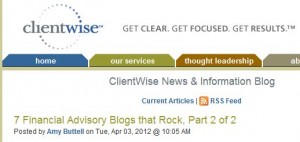Please, no tiny fonts on your PowerPoint slides
You don’t want to make your audience strain their eyes, so make the text on your slides big enough.
Savvy friends have told me to go no smaller than 28 points in my PowerPoint slide text. This squares with what Nancy Duarte says in slide:ology:
For keynotes, don’t go smaller than 28 pt. If you are consistently reducing your point size to under 24 pt and using third-level bullets, you have officially created a document and not a slide.
The Financial Planning Association has similar standards, as I learned preparing for FPA Experience.
Slide:ology presents a handy tip for your slides’ visibility: “Put your file into slide sorter view. Look at the slides at 66 percent size. If you can still read them, so can your audience” (p 152). Of course, if you have unusual eyesight, like a former employee who said she had “fighter pilot eyes,” with vision better than 20/20, you may need to adjust accordingly.





